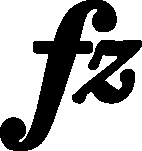



|
b. 83
|
composition: Op. 28 No. 15, Prelude in D♭ major
..
The missing category imprint: Differences between sources issues: GE revisions , Errors of FC |
||||||
|
b. 84
|
composition: Op. 28 No. 15, Prelude in D♭ major
..
The placement of the category imprint: Graphic ambiguousness; Differences between sources; Corrections & alterations; Source & stylistic information issues: EE revisions , Errors of FC , Inaccuracies in A |
||||||
|
b. 84-85
|
composition: Op. 28 No. 15, Prelude in D♭ major
..
FED contains synchronization marks in the R.H. part, which indicate that the semibreves are to be performed simultaneously with the minims at the beginning of the bar. The need for such an indication resulted from the placement of those semibreves, repeated after A, i.e. in the middle of the bars – we reproduce that notation in the graphical transcription (version "transcription"). See also the note on b. 87. category imprint: Source & stylistic information issues: Annotations in teaching copies , Annotations in FED , Synchronization markings |
||||||
|
b. 85
|
composition: Op. 28 No. 15, Prelude in D♭ major
..
In the main text we reproduce the category imprint: Differences between sources issues: Inaccuracies in FE , Errors of FC |
||||||
|
b. 86
|
composition: Op. 28 No. 15, Prelude in D♭ major
..
The missing accent in FC (→GE) resulted from the copyist's distraction – see the note on b. 83. The mark in FE (→EE), placed at the level of the category imprint: Differences between sources issues: Long accents , Errors of FC |

 in
in  in b. 84, the
in b. 84, the  hairpin in b. 85 and the accents in b. 86 and 87. The addition of that mark in
hairpin in b. 85 and the accents in b. 86 and 87. The addition of that mark in  quavers. However, a more thorough analysis of the notation of
quavers. However, a more thorough analysis of the notation of  ), which makes it impossible to write
), which makes it impossible to write